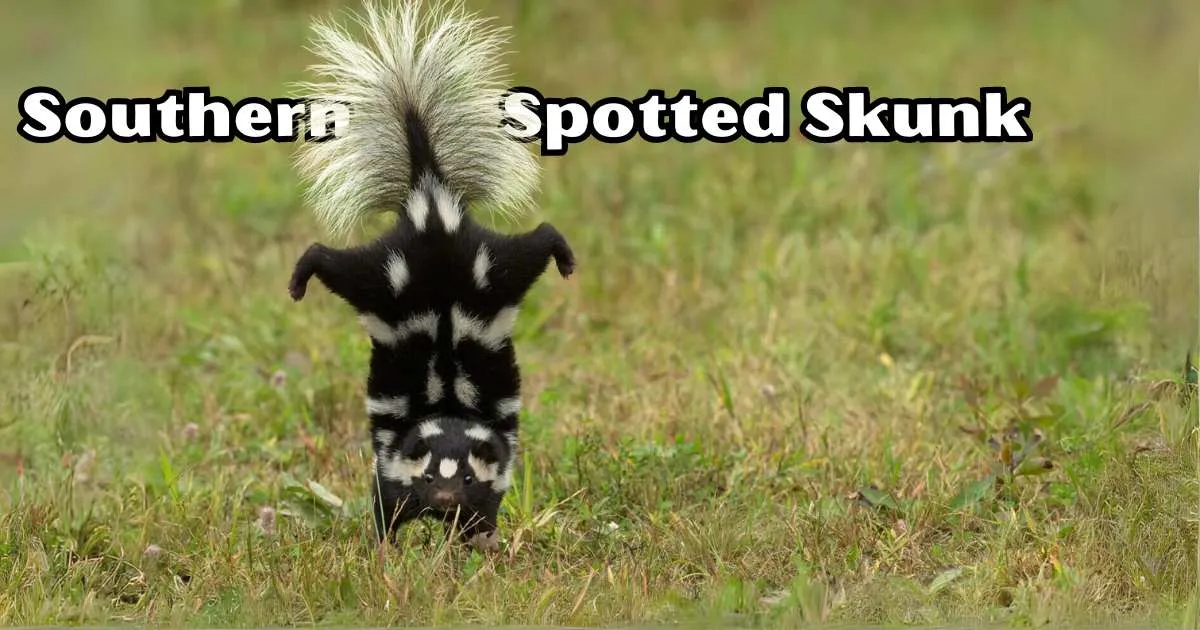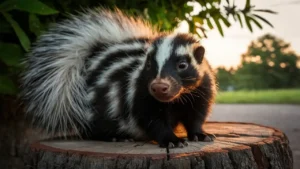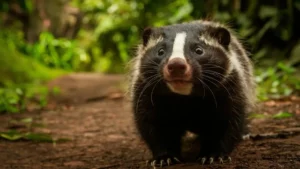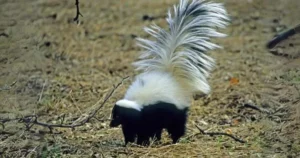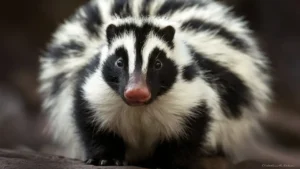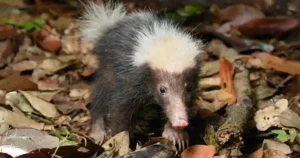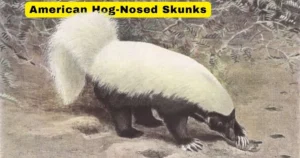Southern Spotted Skunk: The Agile Nocturnal Forager
Ever seen a skunk with spots? Meet the Southern Spotted Skunk! Known for its striking fur patterns and nimble movements, this small skunk is often called the “ninja of the forest.” Roaming the night in search of insects, fruits, and small critters, it’s a master of stealth and survival. Let’s dive into the world of this fascinating creature and learn why it plays such an important role in nature.
Introduction to the Southern Spotted Skunk
The Southern Spotted Skunk, a member of the Mephitidae family, is a nocturnal predator and forager. Famous for its unique spots and defensive spray, it thrives across diverse habitats in the southern United States, Mexico, and parts of Central America. Studying this skunk offers insights into ecological balance and pest control.
Physical Characteristics
The Southern Spotted Skunk is easily identified by its compact size and striking fur patterns.
- Size: Adults measure 13–18 inches from nose to tail and weigh 1–2.5 pounds.
- Fur: Jet-black with white spots and broken stripes, creating unique patterns for each individual.
- Body Features: Short legs, a bushy tail, and a slender, agile build.
These physical traits allow the skunk to climb, dig, and evade predators with ease.
Habitats and Distribution
Southern Spotted Skunks inhabit a range of environments that provide cover and food.
- Geographic Range: Found in the southern United States (e.g., Texas, Arkansas), Mexico, and Central America.
- Preferred Habitats: Dense forests, woodland edges, grassy clearings, and agricultural fields.
Their adaptability makes them capable of thriving in various ecosystems, from secluded woodlands to areas near human settlements.
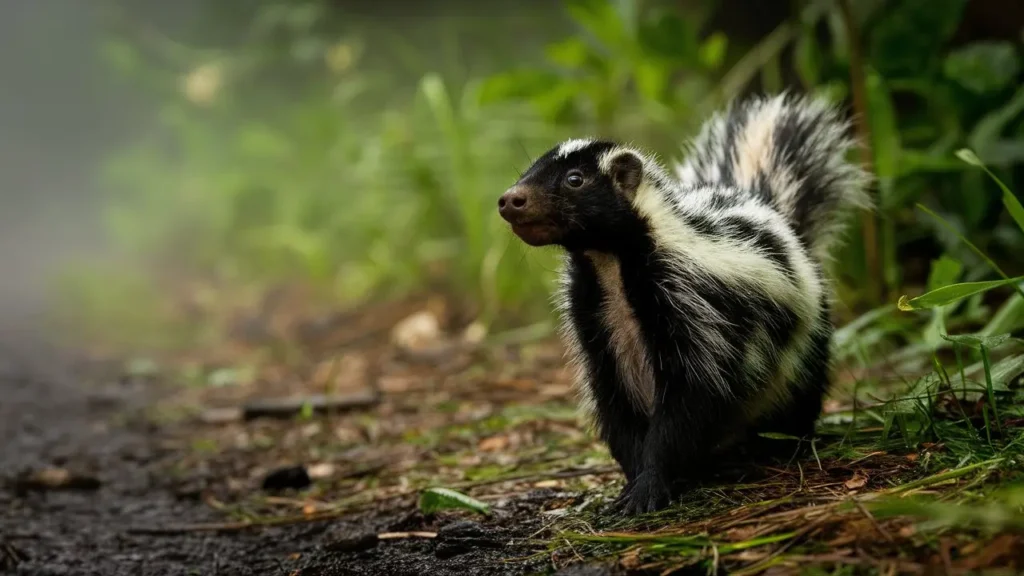
Dietary Habits
These skunks are omnivorous, with a diet that varies based on seasonal availability.
- Primary Foods:
- Insects: Beetles, grasshoppers, and larvae.
- Small Mammals: Rodents and occasionally birds.
- Fruits and Berries: A source of natural sugars and fiber.
- Eggs: Taken from birds’ or reptiles’ nests.
Foraging Behavior
The Southern Spotted Skunk employs diverse techniques to gather food:
- Digging: Using sharp claws to unearth insects and roots.
- Climbing: Scaling trees to raid nests for eggs.
- Scavenging: Consuming carrion when other food is scarce.
Their resourcefulness makes them efficient foragers in a variety of habitats.
Behavioral Patterns
Social Interaction
Southern Spotted Skunks are solitary by nature, except during mating season. Young skunks stay with their mothers until they can survive independently, typically dispersing by fall.
Defensive Mechanisms
When threatened, this skunk uses several strategies to protect itself:
- Handstand Display: Performs a dramatic handstand to show off its warning colors.
- Spray: Releases a foul-smelling liquid capable of reaching targets up to 15 feet away.
- Escape: Agile movements allow it to climb or retreat to safety.
The skunk’s potent spray is a last resort, ensuring predators think twice before attacking.
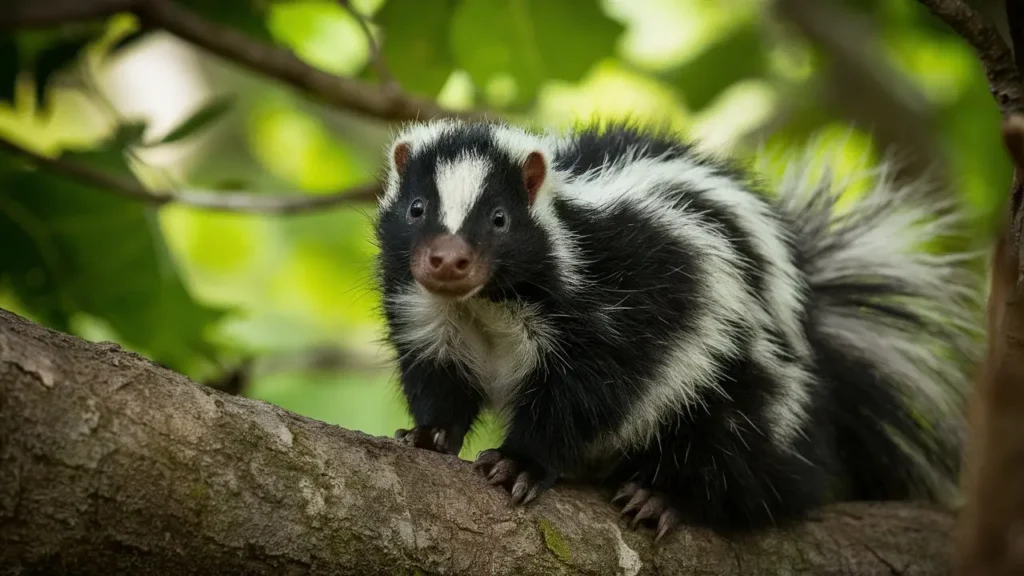
Reproduction and Lifecycle
The lifecycle of the Southern Spotted Skunk involves distinct phases of growth and development.
- Mating Season: Late winter to early spring. Males travel long distances to find mates, engaging in courtship rituals like stomping and scent marking.
- Gestation: Lasts 50–65 days.
- Litter Size: Typically 5–6 kits, born blind and helpless.
- Weaning: Kits begin eating solid food by 4 weeks and are weaned by 8 weeks.
- Maturity: Young skunks reach independence and establish territories by 10–12 months.
Conservation Status
While adaptable, Southern Spotted Skunks face several threats:
- Habitat Loss: Urbanization and agriculture reduce their natural homes.
- Predation: Larger mammals and birds of prey are constant threats.
- Human Conflicts: Skunks are often killed in road accidents or targeted as pests.
- Diseases: Rabies and canine distemper pose additional risks.
Conservation Efforts
- Protecting natural habitats through wildlife reserves.
- Educating communities about the ecological role of skunks.
- Conducting research to monitor population health and behavior.
Fun Facts About Southern Spotted Skunks
- Unique Patterns: Each skunk’s spots and stripes are as unique as fingerprints.
- Climbing Ability: Unlike most skunks, they can climb trees to escape predators or forage.
- Pest Control: They help control insect and rodent populations, benefiting ecosystems and agriculture.
- Handstand Display: Their acrobatic defense is both entertaining and effective.
- Omnivorous Diet: Their adaptability in eating ensures survival across seasons and habitats.
Frequently Asked Questions
What do Southern Spotted Skunks eat?
They eat insects, small mammals, fruits, berries, eggs, and vegetation, adapting their diet to seasonal availability.
Where do Southern Spotted Skunks live?
They inhabit woodlands, grasslands, and agricultural areas in the southern United States, Mexico, and Central America.
How do Southern Spotted Skunks defend themselves?
Their primary defense is spraying a foul-smelling liquid, but they also use warning displays like handstands and escape tactics.
Conclusion
The Southern Spotted Skunk is an agile and resourceful animal with unique behaviors and a critical role in maintaining ecological balance. From controlling pests to dispersing seeds, these spotted marvels contribute significantly to their habitats. By understanding and protecting them, we can ensure their survival and the health of the ecosystems they inhabit.

